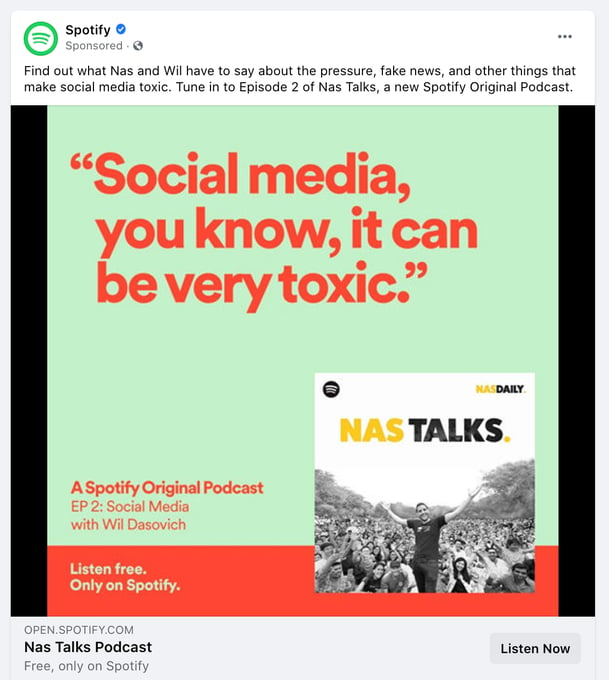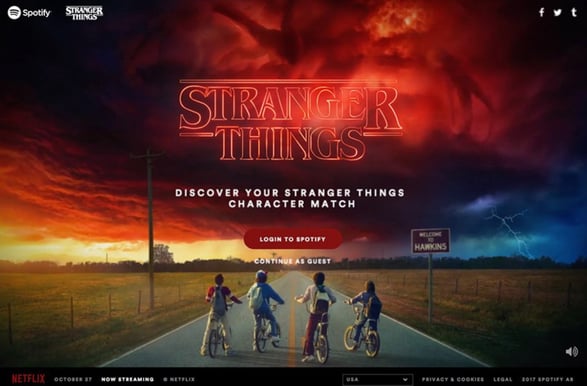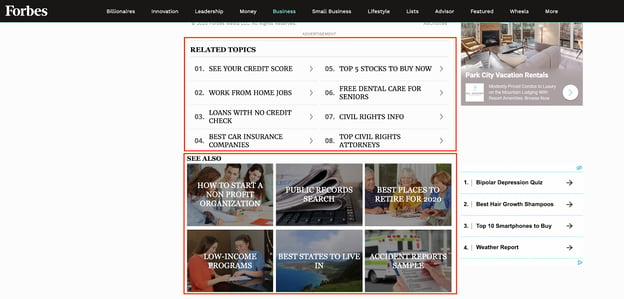Is native advertising right for your marketing strategy?
There’s about a 101% chance that you’ve encountered native advertising content without even realizing it. Native advertising examples are everywhere — they are articles, infographics, and even videos that you come across when you’re surfing the internet.

You’re not alone, though! Native advertising is barely noticeable, especially when it’s done right by an advertiser.
What is native advertising?
In the content spectrum, native advertising is paid content (either branded content or sponsored content) that fits seamlessly with whatever platform the ad is placed on.
Native ads carefully blend into the publication’s or site’s editorial style and tone while providing information that their audiences expect. Some ads blend so well that they don’t look like ads because they differ from traditional banners and pop-ups that we’re all used to.

A native ad isn’t intended to redirect viewers to another website or disrupt their experience on a platform, even when the goal is to sell a product or a service. Users can keep scrolling through the content buffet without interruption, with ads in plain sight.
Is native advertising effective?
According to research from eMarketer, advertisers will spend a whopping $52.75 billion in the United States alone! That’s a lot of ad spend on content you probably didn’t even realize was advertising. So, if you’re wondering whether or not native advertising can be effective, the numbers should speak for itself.
But if it still isn’t that obvious — yes, native advertising works. Native advertising works specifically because it takes a completely different approach from traditional advertising. Instead of blatantly telling you what to do, it urges your audience to realize what they need to do on their own.
Pros and cons of using native advertising
Pros
- Native advertising is a win-win. Audiences get relevant information that interests them and your brand gets exposure (even if it’s a little camouflaged).
- Native ads are labeled with “Sponsored”, “Advertisement”, or “Promoted” to alert your audience that the content is an ad. No predatory practices here!
Cons
- Viewers might miss the ad labels as they are getting smaller and more transparent which audiences may find deceiving. Unfortunately this is not something that you can control.
- Buying space for content that could’ve been displayed organically can make readers dubious about the accuracy of the content.
How to make your native advertising successful
Creation
Determine who your target audience is and carefully curate the content towards your audience.
🛍️ Stuck determining your target audience? We've got the word on 6 Audiences You Need for for eCommerce. →
Location
Focus on choosing the right medium. Although social media is easy and popular, bear in mind that you’ll likely be competing with a lot of advertisers.

You might also want to consider using a native advertising platform like Taboola that can help you buy space that is formatted similarly to the content of a website.
Measurement
Native ads aren't measured by the same metrics you'd follow for a Facebook campaign. Native advertising is typically measured by:
- Traffic,
- Click-through rate,
- Social media shares, and
- Average session duration.
Have you had success using native ads in your digital advertising strategy?


-AK-148968-preview.png?width=842&height=310&name=1.01-1x1px-Embertribe-(Client-Services)-AK-148968-preview.png)











.png?width=810&height=810&name=TJ%20Jones%20-%20%20CoFounder%20EmberTribe%20(1).png)


%20-%20500x500%20-%20SP%20-%2045.01.png)
%20-%20500x500%20-%20SP%20-%2049.01.png)
%20-%20500x500%20-%20SP%20-%2057.01.png)


.png)